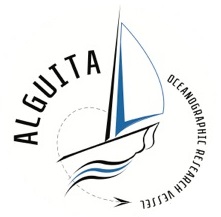“We need a fundamental rethinking of the Plastic Age and our growing global health crisis.”
The Plastic Pollution Conversation is a voice in the wilderness speaking for those who cannot speak for themselves….our oceans. In the fall of 2012, the volume of that voice was raised by Captain Moore across Eastern and Southern Pacific countries in Tokyo; Japan; Hong Kong, China; Sydney and Melbourne, Australia; Hobart, Tasmania; Auckland, New Zealand and the Hawaiian Islands of Maui and Oahu. The format was, and is, a model for building a global network of people committed to making a positive difference in the health of our oceans. The world must be convinced to cease using them as the final resting place for its waste. These words echoed at each venue along the Tour route, igniting audiences to listen and learn, launching a chain reaction of thought---how we view the plastic age, ourselves in it, and what we must do in order to preserve our oceans and the overall health of the planet.
JAPAN
Beginning in TOKYO, I visited a middle school where children are fighting plastic pollution with filling stations for reusable bottles. At Kasumigaseki, a high level press conference was held, both for the publishers of my book, Plastic Ocean (in Japanese) and NHK. This included screenings of the “Inconvenient Truth of Waste,” and “Trashed,” narrated by Academy Award winner Jeremy Irons. As a result, I was asked to do an interview with the largest daily in Japan, Tokyo Shinbun; a great kick off for the Tour.
AUSTRALIA
In MELBOURNE, I toured two community gardens and joined a beach cleanup. The next day I presented at the South Melbourne Commons, followed by journeying north to Jervis Bay where I presented at the Maritime Museum.The beautiful Taronga Zoo in SYDNEY was a special venue to open “The Conversation.” This was followed with an interview with an ABC Science Show. Since the Tara Expedition samples that were collected for Algalita in Antarctic waters revealed 50,000 pieces of plastic, the interview presented an opportunity to talk about the surprising amount of debris found in that location.
CHINA
The next stop was HONG KONG, the site of the largest plastic pellet spill in recorded history, devastating local fish farmers businesses in two ways. The majority of the fish ate the pellets and were in deep distress, swimming belly up as a result of the buoyancy created by the pellets. Though the pellets were found to be toxic free, all retail outlets refused shipments of the surviving fish. Joining in a beach cleanup, I was very impressed with young people who had invented a rotating screen to scour out the pellets.
NEW ZEALAND
NEW ZEALAND was the southern-most stop on the Tour. The Sir Peter Blake Trust staff scheduled me at the New Zealand Maritime Museum. In AUCKLAND, I was hosted by former Mayor, Bob Harvey, at his home in beautiful KareKare. The next day I appeared on his behalf at the Keep Auckland Beautiful meeting.
The Waitemata Harbour Cleanup Trust Program helps to keep Auckland's harbours and gulf islands clean. They also clean along the shorelines and beaches, as well as estuaries and mangrove areas using a kayak or a flat-bottomed punt.
Hayden Smith and the Sea Cleaner Program are very active and growing.
TASMANIA
On to TASMANIA. Revisiting the island in HOBART at the southern tip of the continent, the birthplace of the Alguita, I lectured at the Institute for Marine and Antarctic Studies at the Stanley Burbury Theatre at the University of Tasmania. Discussion ensued surrounding sampling plastic debris loads on Macquarie and Heard Islands daily, rather than monthly - something they have found necessary in order to obtain accurate debris counts.
HAWAII
The Maui Ocean Center Aquarium on the Island of MAUI was my next stop. I also joined a beach cleanup on the windward side with a Maui resident who had been a crew member on the first leg of our 2012 Japanese Tsunami Field Investigation Expedition. I was appalled to see the ghost nets embedded in the sand, making them extremely difficult to remove. The next day I did an in-studio taping at Akaku Community Television which aired on their community schedule. Other venues included The Whaler’s Museum in Ka’anapali and the NOAA Whale Sanctuary in South Kihei.
OAHU was the last stop on the Tour at the University Laboratory School in HONOLULU on October 14, graciously arranged by Jack Johnson's Kokua Hawaii Foundation and Surfrider Oahu. It was a great pleasure to end the Tour by making new friends with the Sustainable Coastlines folks and to receive the John Kelly Surfrider Environmental Lifetime Achievement Award.







